Most recently, NASA and Axiom Space unveiled a new space suit for moon walks.
This is the garment astronauts will wear in 2025 when they go to the Earth’s satellite under the Artemis research program. The new suit for the space conquerors is distinguished mainly by its color – we are used to white ones, but the most up-to-date outfit turned out –unexpectedly – black with orange and blue elements. In addition, it has many adjustable parts and thus provides the astronauts with more capabilities and increased flexibility. The materials the suit is made from allow to withstand extremely harsh conditions and temperatures ranging from +50 °C to -200 °C. The special gear also features several lighting devices of different power and a high-resolution camera.
Thus, modern space suits are fitted out with all necessary life support systems and the latest high-tech devices. But what were the space suits of the past like? More than 60 years have passed since the first manned spaceflight, and not only our ideas about the universe have changed, but how we designspace gear has changed as well. This article explores how space suits came to be and what changes they have undergone throughout their history.
How the idea of space suits originated
In fact, the space suit first appeared long before space exploration got under way. Surprisingly, the idea of a space garment was suggested to future developers by people who, at first glance, were far from science, namely artists and writers. For example, the English artist Edward Francis Burney created a graphics novel "Journey to the Moon by Esquire Kew Kue back in 1815. The work was a series of drawings depicting a flight to the Earth’s satellite. The main character, an astronaut, wore a special protective suit that shielded him from various hazards. Although there were some science fiction novels about space exploration at the time, Berney was one of the first to realize that space was full of hazards that man would need first-rate gear to withstand them.
In 1865, Jules Verne's science fiction novel From the Earth to the Moon: A Direct Route in 97 Hours, 20 Minutes was published, to be adapted decades later by Georges Méliès as the first science fiction color film. However, Jules Verne's space suit was not much different from the diving one featured in his other novel Twenty Thousand Leagues Under the Seas. Subsequent authors, such as Garrett P. Serviss and his Edison's Conquest of Mars, thought along similar lines, so the design of their space suits also remained similar to that of today’s diving suits. Nevertheless, it was art that gave researchers many ideas for space suit design and had a major influence on the production and further improvement of space gear.
The first space suits: from the “space diver outfit” to high-altitude suits

The designers of the first space suits also drew on diving equipment, so they called the space suits "space divers" (cosmolazy). However, the space suits failed the test: they were very difficult to move in, and the big size and weight of the metal helmet with a high steel collar created additional problems. In addition, the suit had bulky lace-up boots and thick gloves, and its very design made the astronauts clumsy. Even putting it on was challenging, time-consuming, and arduous. The suit, though very bulky, was not fitted out with self-contained ventilation and thermal protection systems. But it was back in the 1920s, so there was still a long way to go before the first human space flight!
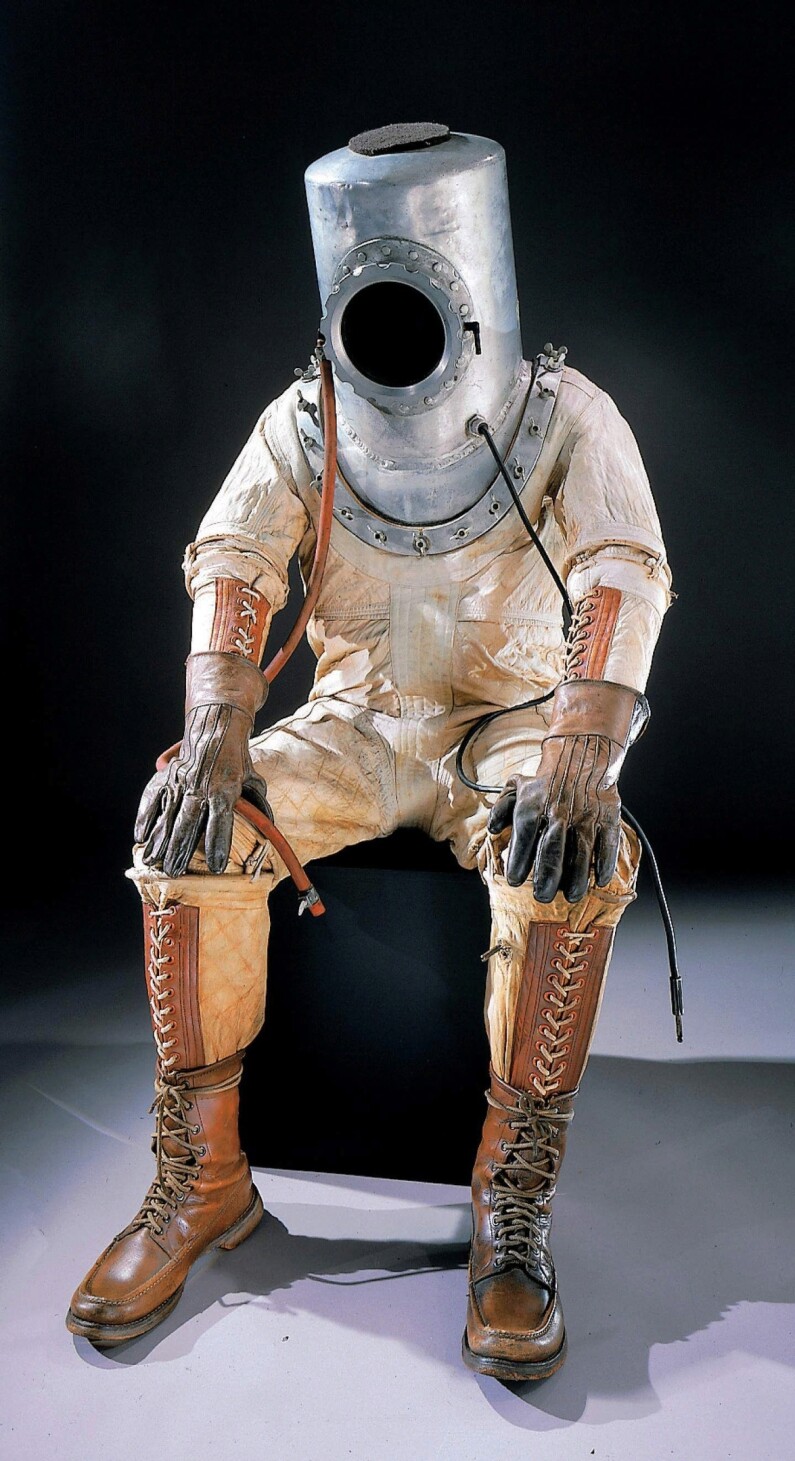
Astronautics made a particularly fast-paced progress after World War II, when the US Air Force was, in the early 1950s, aggressively developing space suits. At that time, they came to resemble aircraft pilot equipment, but aluminum and other metal alloys were integrated to increase strength. So space suit design evolved rapidly – they came to resemble their current form, but still could not guarantee astronauts’ complete safety. It is noteworthy that each new space suit prototype featured more and more protective layers with metal elements integrated into the fabric. The breathing and ventilation systems as well as supply and communications features were also improved.
The space industry in the USSR was advancing just as rapidly. Engineering groups were developing so-called "high-altitude suits", but the only testing option available was military aircraft. Experimental parachute jumps in space suits were also carried out. It is scary even to imagine how they all went! After all, cosmonaut helmets – heavy and quite bulky – still looked more like cylinders. The space suits were also massive and mainly gray.
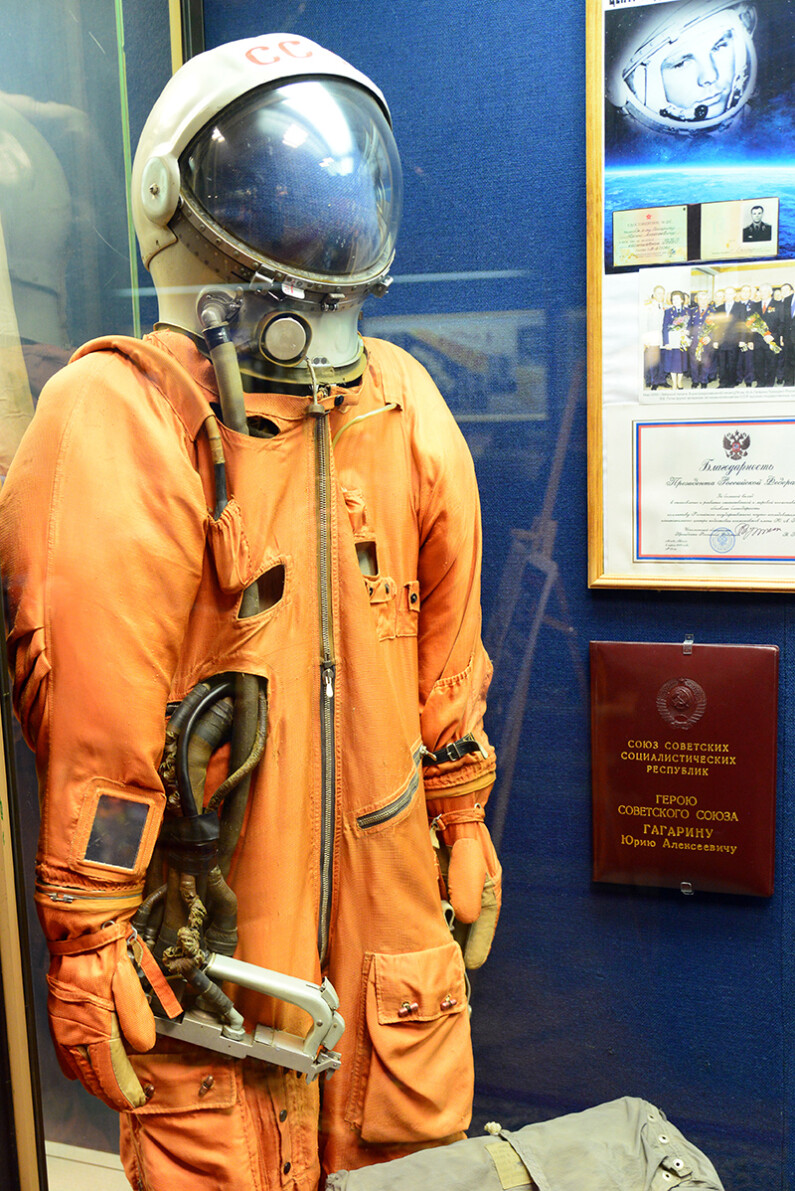
Only by 1960, the new space suit was for the first time tested in space. It was a survival suit, later to become famous as SK-1 for Vostok spacecraft. It was in this one that cosmonaut Yuri Gagarin made his first-in-history space flight. The SK-1 was not just a space outfit, but a whole set of life support systems and special equipment for saving the astronaut under any, even the most critical, environmental conditions. The suit was distinguished by its bright orange color, intended to make it easier to find the astronaut in case of disaster. It had a piping system that maintained the necessary body temperature and provided moisture removal. At that, it was designed to be used only in combination with an additional thermal protective garment and was fitted out with a self-contained ventilation system (i.e. a rubber curtain separated the helmet from the shell, but the helmet could not be completely removed). Despite the multitude of various complex devices, this suit was much more comfortable than its predecessors. And a whole team of specialists was not required to help put it on, as was the case earlier. The cosmonaut was able to put on the space suit himself, which took on average about 5 minutes.
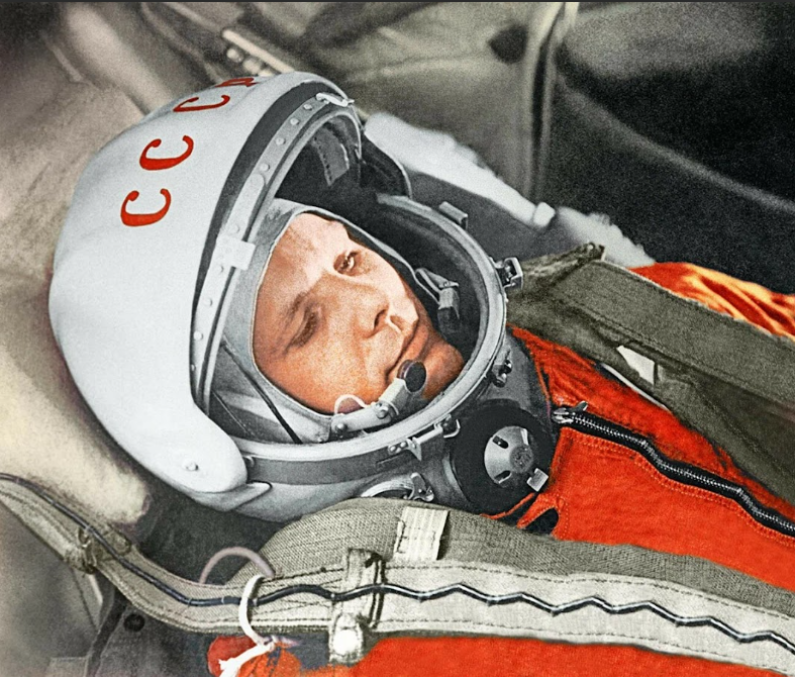
However, it also had a major disadvantage: under the internal overpressure its soft shell made it difficult for the astronauts to bend their arms or legs. This caused higher fatigue, because oxygen supply had to be increased and the cooling system had to be expanded. On the other hand, the suit and its state-of-the-art life support system enabled the crew to spend at least ten days in the spacecraft.
Suits of the US space programs

In 1959-1963, Mercury – the first US manned space program – was launched. It aimed to create a manned spacecraft and to explore the potentialities of being in space. The program flew six missions – two suborbital and four orbital ones. In addition to building the spacecraft, a special Navy Mark IV Suit was developed for it. Prior to the Mark IV, similar suit types had already been created, but all of them were very heavy, extremely difficult to use and astronauts had mobility problems when they wore them. The new one was the lightest in history at the time. It looked like a silver, light-reflecting suit with a hermetic helmet and featured many straps, zippers and restraint cords. The fabric – aluminum-coated nylon – enhanced heat transfer. It was the Mark IV space suits that the US astronauts, known as the "First Seven", wore.

Along with that, a suit known as the AX1-L or SPD-143 was developed in 1963. It had black rubber spirals on the knees, elbows and hips allowing the astronauts to flex their limbs freely (unlike Gagarin's SK-1). A support system of chest straps kept the suit from expanding too much (without it the suit would have bloated under great pressure). By the way, the previous Mark IV model, the first astronauts wore, had exactly this problem: the suit failed to easily change its shape, so the astronauts were virtually immobilized under high pressure. The AX1-L, on the other hand, completely solved this problem.
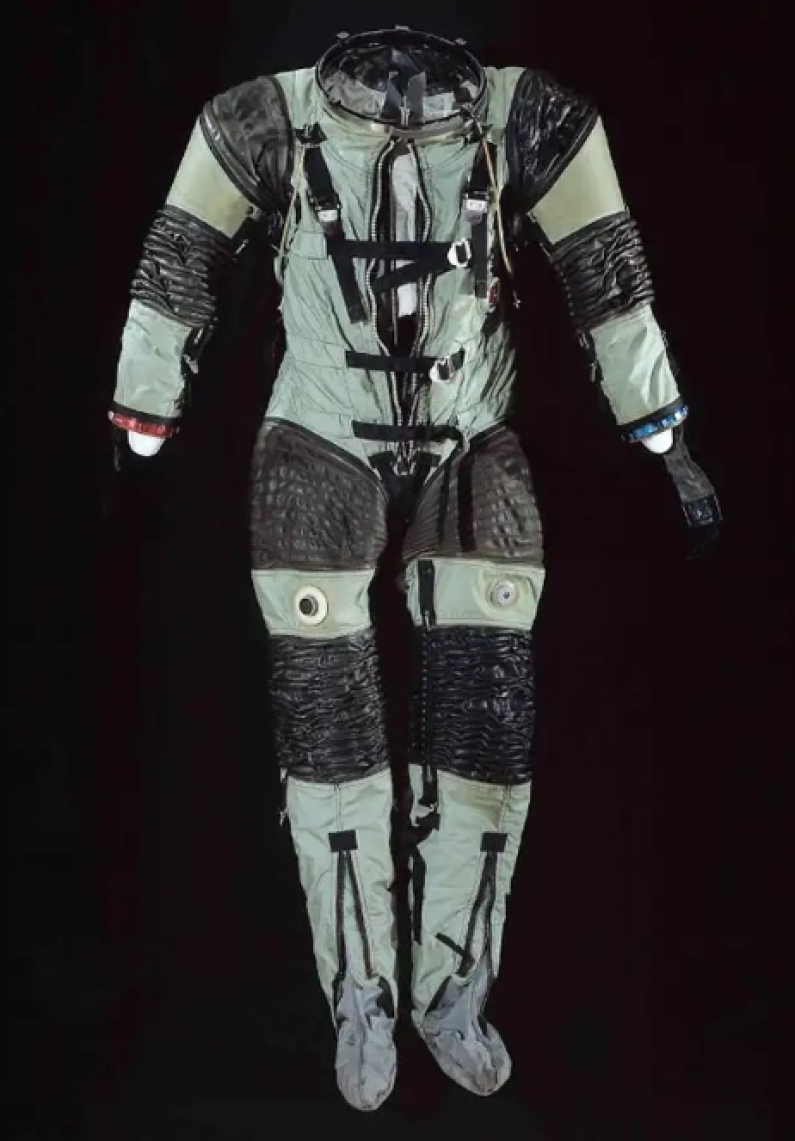
In the early 1970s, the engineers of the Apollo program that was tasked to land astronauts on the moon, upgraded the space suits and significantly improved them to secure free movement on the lunar surface. For example, glove fingertips got rubber inserts, and portable life support backpacks were developed. In addition, the Apollo suits had boots designed specifically for walking on rocky surfaces, and air was supplied through a newly modified umbilical connecting the space suit with the spacecraft. The helmet inside no longer fogged with moisture. The space suits were no longer cooled by ordinary air: the nylon mesh undergarment allowed to cool the astronaut's body by water, much like a radiator cools a car engine. Additional layers of fabric improved air-tightness and provided better thermal protection. The new suit was called Moonwalk. Its total weight with a backpack was about 82 kg on Earth, but it decreased considerably on the Moon to about 14 kg. At the same time the space suit had many additional features and fabric inserts which provided better sealing, thermal protection and heat exchange.

In addition to working on a special suit for the moon landing, engineers were creating a separate one for a shuttle flight. Thus, the space suits had a clear-cut classification:
- rescue suits;
- for outer space activities;
- for a shuttle flight (spacecraft).
The first shuttle space suit came to be later called the Pumpkin suit for its bright orange color, or the Space shuttle suit. It featured a launch and entry helmet with all communications gear. Other add-ons included a new model of gloves and boots, an oxygen manifold, valves, a built-in life raft and a ring buoy.
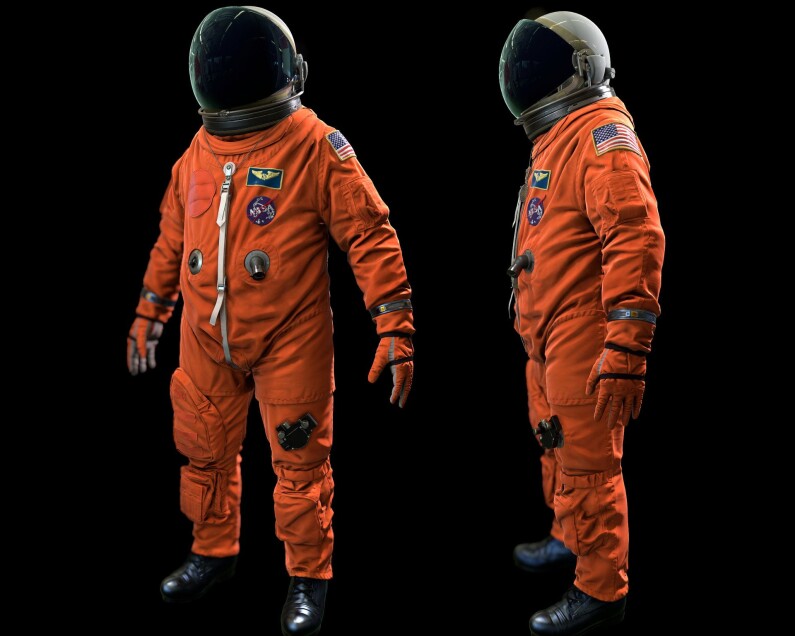
In 1986, right after the Challenger space shuttle disaster, engineers came up with a special golden-hued parachute suit to allow the crew to leave the spacecraft in an emergency. Called the Advance Crew Escape System Pressure Suit, it was a modified version of the US Air Force high-altitude suit. Inflatable bags replaced the tubing and tapes; it also featured a special inflatable neck collar for helmet sealing. The new suit complete with a parachute was quite heavy – it weighed about 43 kilograms.

It was also during that period that the orange-colored suits began to be worn exclusively on shuttles, so they were not designed for harsh conditions. And the heavier white suits were used for extravehicular activities, that is, on space walks. After all, it was the white suits that reflected the light best and featured additional dense fabrics, insulators, and piping.
Thus, engineers actually came up with a new space suit system comprised of two key modifications used for two different missions. The orange suit – Configuration No. 1 – is worn at launch, landing and, if necessary, sudden cabin depressurization. And Configuration No.2, the white suit, is used on moon walks. The suits are fitted out differently in line with their intended use: Configuration No.1 actually does not need a life support backpack, which is a must for Configuration No. 2.
What kind of space suits are used today
While the first space suits were made almost entirely of soft fabrics and contained relatively few metal alloys, modern versions combine both soft and rigid components almost equally. This secures the astronauts' life support, their mobility, and greater comfort. At the same time the new space suits are smart and better versions of their predecessors, but now they feature built-in computers, high-resolution professional cameras and other high-tech devices. One of these is the Orlan, developed by Soviet researchers in the late 20th century. It is designed to last about seven hours in open space, but due to individual differences in oxygen consumption, the actual duration can vary. Orlan provides the crew with a safe breathing environment, enables to maintain normal body temperature and protects them from ultraviolet, cosmic rays and various types of dust. Over several decades, the space suit’s other features have been significantly modified.
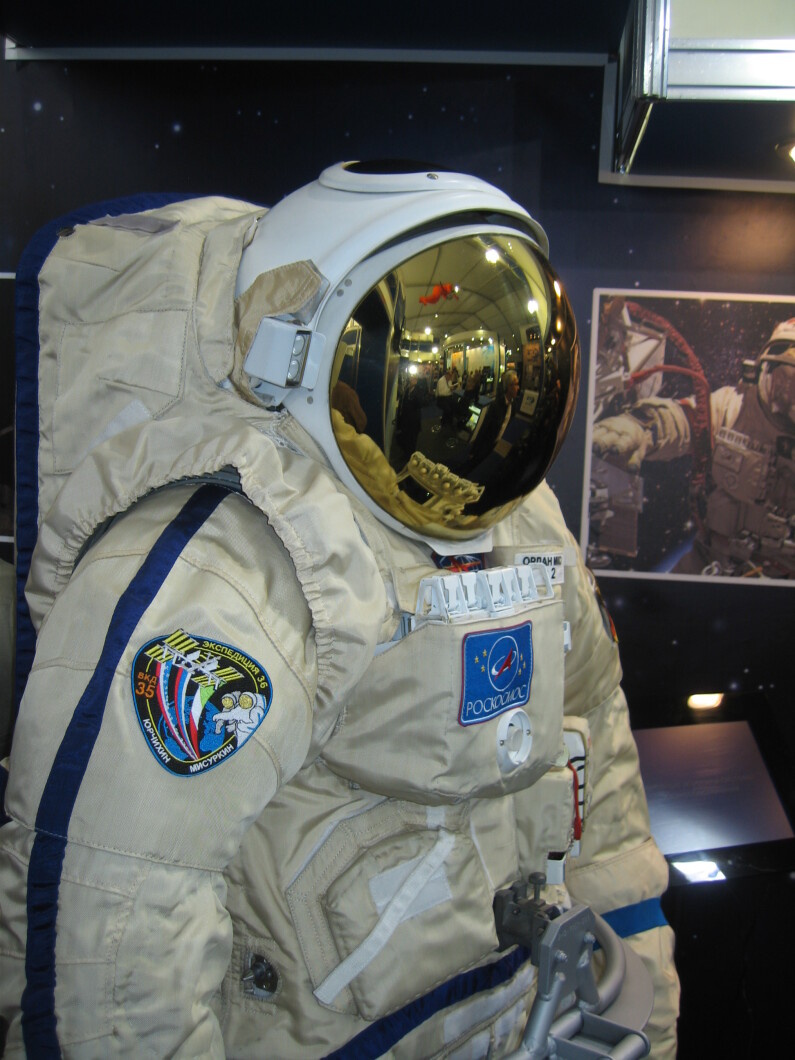
The latest version of a new-generation space suit came into being in the late 2010s. It has a state-of-the-art computer that controls operation of all critical support systems. The avionics will immediately report even minor reading deviations before entering space or during extravehicular activities and give recommendations to the astronaut on what to do in the situation. The space suit also features a one-size-fits-all helmet that can be adjusted to crew members’ individual measurements. The modern Orlan is called a miniature spaceship – an astronaut doesn’t just put it on, but literally enters it. They do it through the “entrance” in the suit’s back.
Most modern space suits also have such an "entrance". For example, the Z-1 Prototype Space suit designed and created in 2012. It even won the title of the best invention of the year, according to the Time magazine. It is made of nylon and polyester for better pressure control.
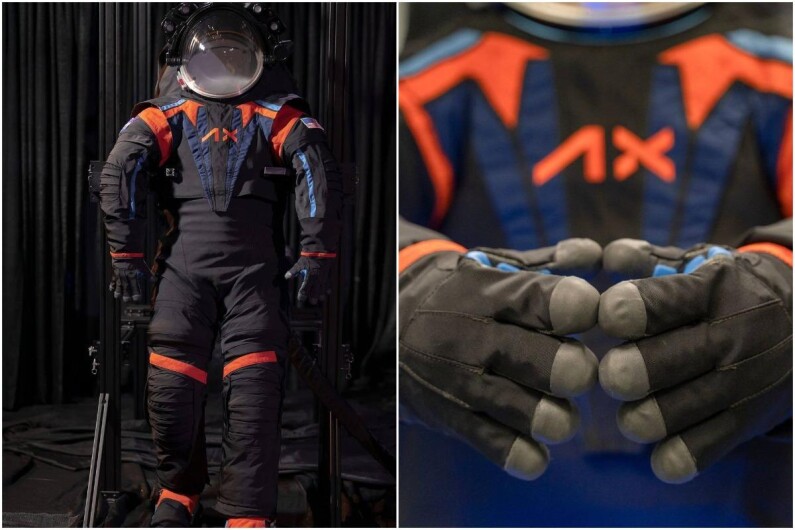
The Extravehicular Mobility Unit, or EMU, an American spacewalk suit, is used for extravehicular activities along with the Orlan. Though similar to the Orlan model, it has a number of different features – a reinforced shell capable to withstand harsher temperatures, as well as a longer open space time of 8 hours.
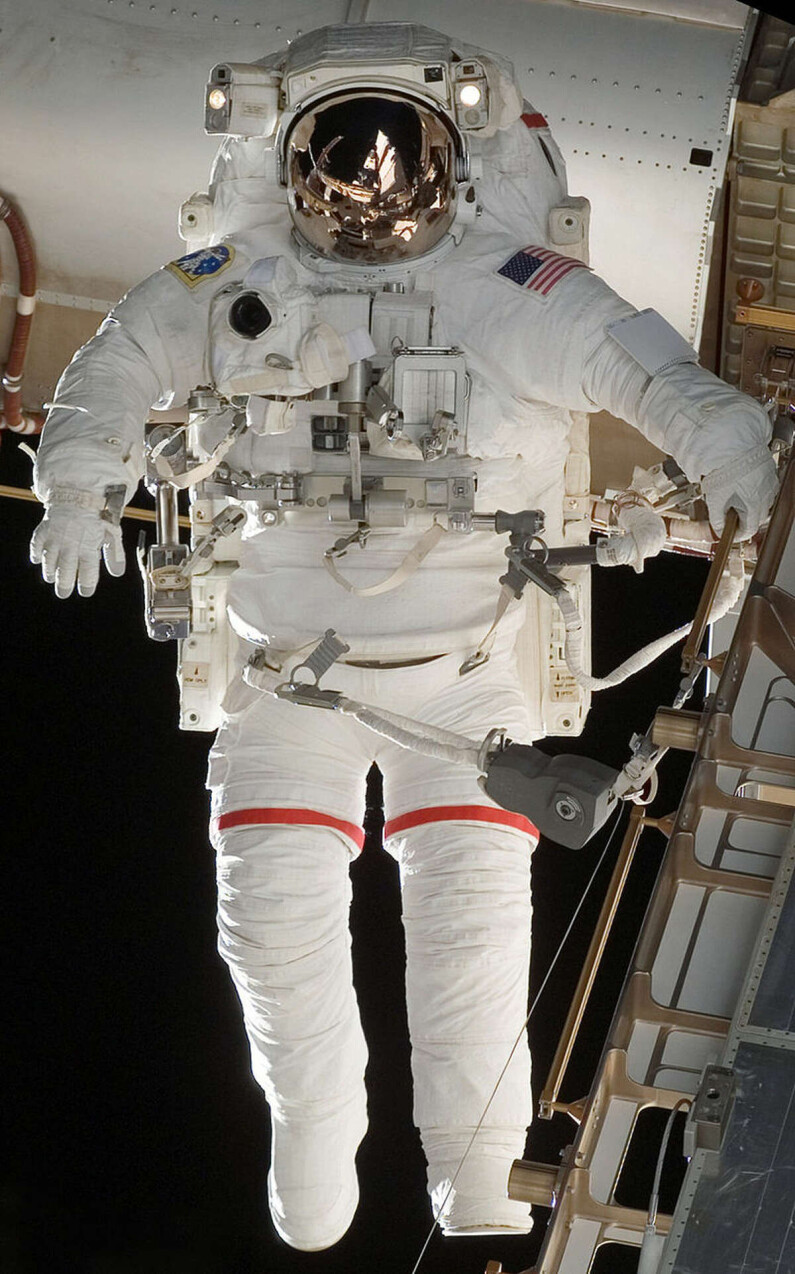
Moreover, engineers are now working on a new generation of space suits, for example, the Biosuit, or "Space suit of the future”. It will be made of a new material – an elastic fabric with thin threads of nickel-titanium alloy lining the entire suit. When connected to a power source, the suit will cause the threads to shrink, fitting tightly around the astronaut's body. Such protection will enable the crew to easily move around the surface of other planets.

The cost of such space suits ranges from hundreds of thousands to tens of millions of US dollars. For example, the EMU costs $12 million. Many modern space suits are called "homes" by their developers, because they really perform all the functions of a full-fledged shelter for astronauts. Such space suits offer not only a few protective layers, but also built-in technology: computers, communications, air conditioning, etc.
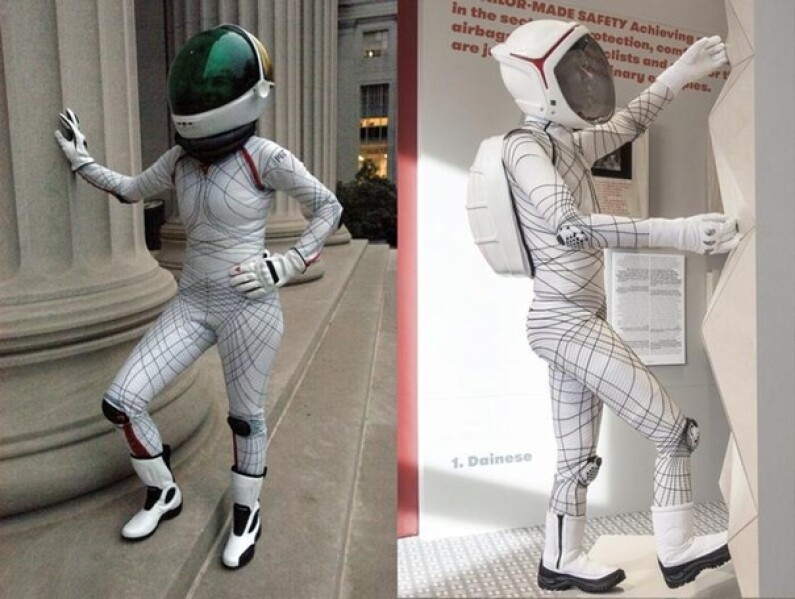
So let’s look back: how did it all start? Back in the 20th century, space suits were so heavy that one could barely move around in them. At the same time, they failed to offer the astronaut full protection from potential hazards. Today, space suits are full-fledged miniature spaceships, providing each crew member not only with complete safety, but also other necessary comforts for a long stay both on the spaceship and in outer space.
Share this with your friends!
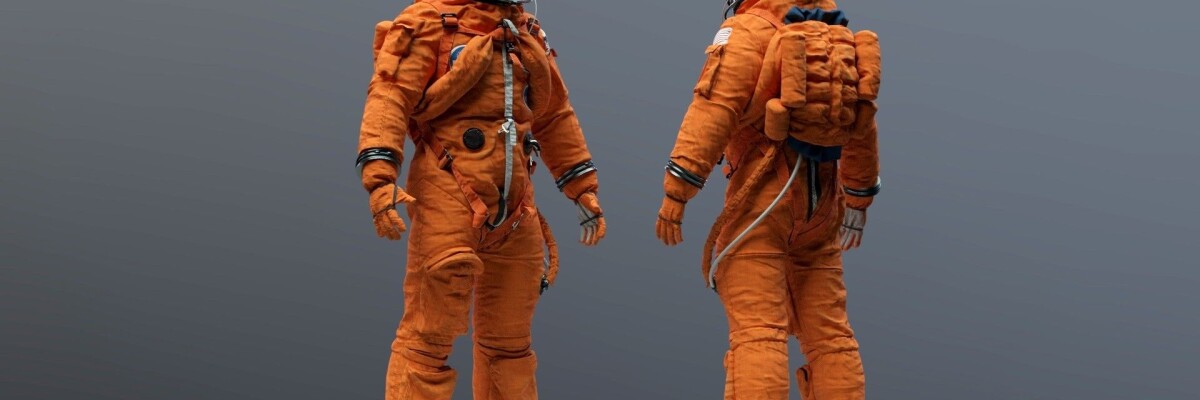





Be the first to comment
Please log in to comment